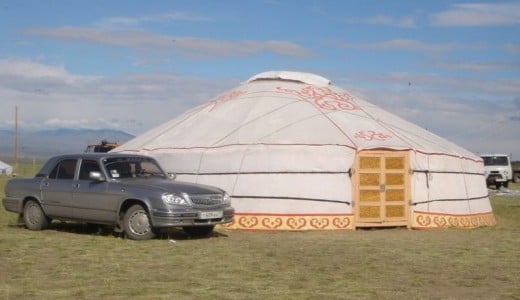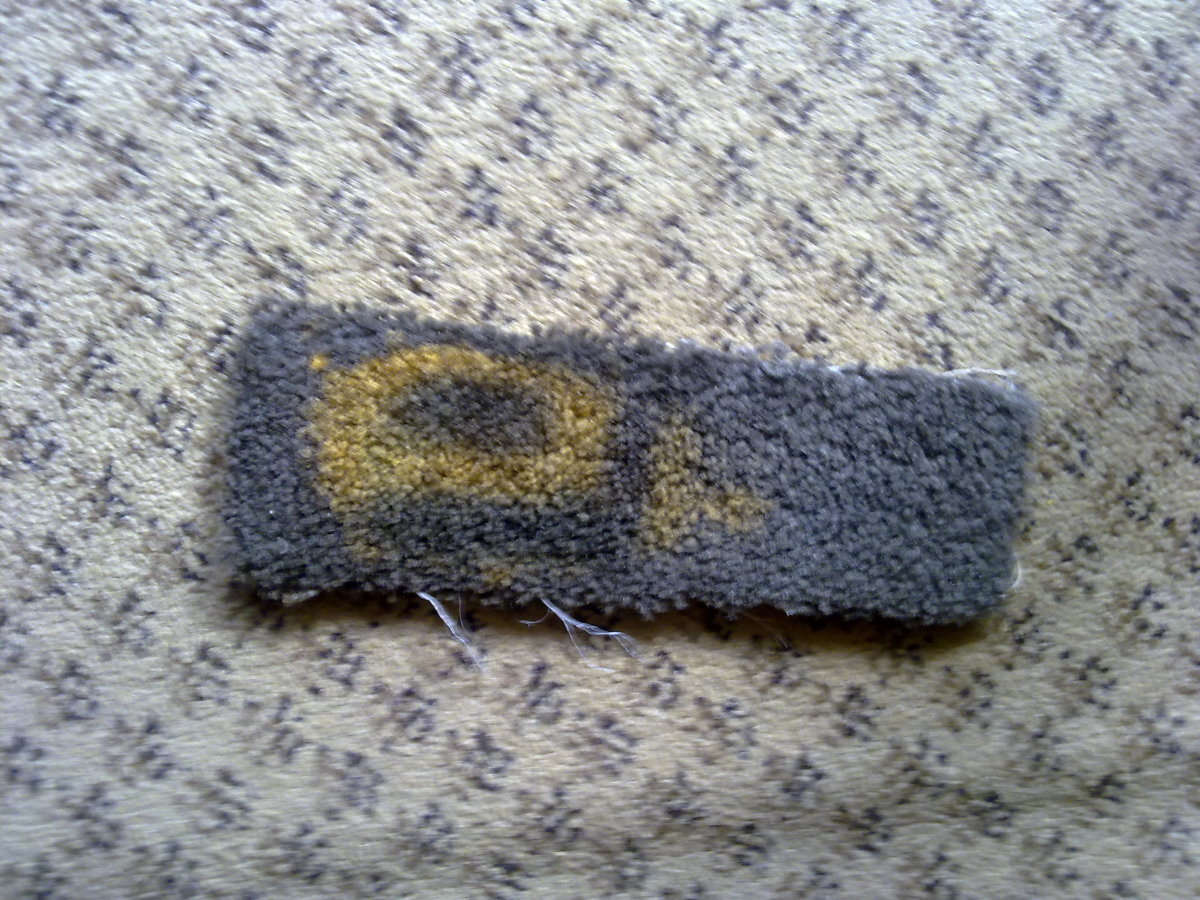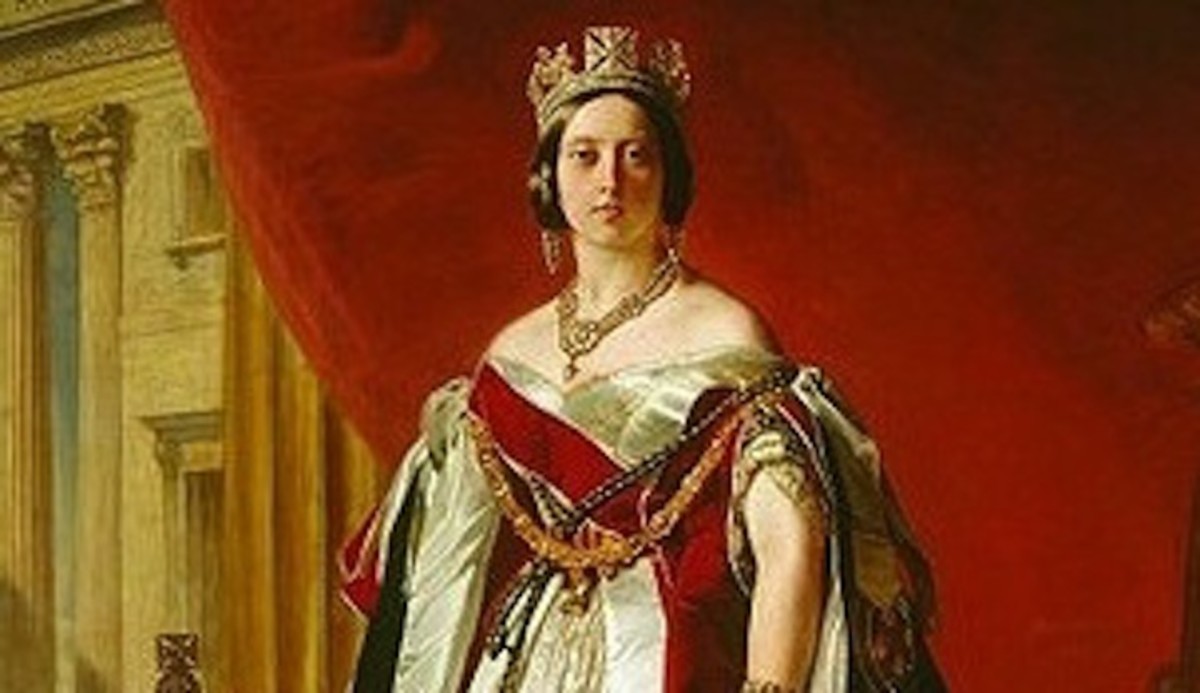- HubPages»
- Home and Garden»
- Home Decorating»
- Interior Design & Decor
The Difference Between Carpets And Rugs
The use of carpets was once reserved for kings and chieftains and other folk of high degree. rich rugs made an awning over the throne in palaces of the ancient Assyrian kings and Persian emperors. the French King Louis XIII had a carpet spread before his throne and none of the nobles around him dared step on it. In the previous century, a rare and famous carpet was spread before the throne of Edward VII of England at his coronation.
Gothic and Renaissance paintings often show an Oriental rug hanging on the wall or spread over a table or a bed. A fine rug might be placed under the feat of a Madonna or of a nobleman. There might be a fine rung in front of a church altar.
On holy days, a carpet was used for the canopy above a saint's statue. Additionally, where a procession passed, the houses would be decorated with beautiful carpets hung from the windows or laid over balcony railings. This is still true on special days in many places in the East.
Thus, in one way or another, rugs and carpets (and the difference between them does not exist) were a sign of importance. Today, when we say we got a "scolding", we still might say we are "called on the carpet" -- a leftover expression from long ago, when a carpet marked the place of people who had authority.
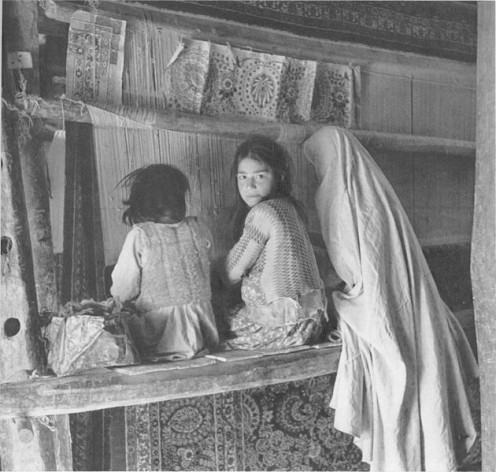
Weaving was one of the first ideas that came to primitive man. Maybe had noticed how the roots of trees were intertwined, or he tore apart the hairy fibers of vines or tree bark and saw how strong they were. Long before written history, he learned that masses of animal hair could be made into felt by wetting and pounding them with a stone. Vines and grasses were braided together to make a rope. And weaving began, too, when reeds interfaced to make a very plain sort of straw mat, or grass rug.
The Eskimos made such mats, and American Indians wove them from rushes and from a twine made of twisted nettle bark. In the Pacific Islands, the natives used rattan. North Africans had mats of palm fiber or hemp, sometimes put together in large red and black patterns.
Then someone found that the hair of some animals could be twisted or "spun" into a strong woollen thread, or that the hairy plants could be spun into cotton, linen and other threads. After that it was easy enough to invent a loom for weaving these threads.
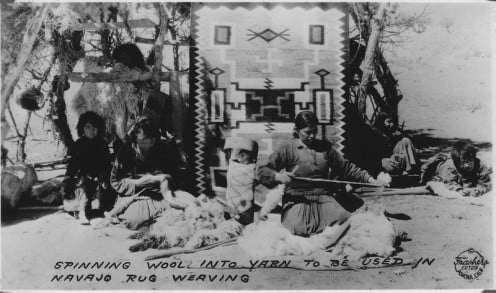
Basket Weave And Pile Carpets
The Navajo Indians and some weavers of the Middle East still use this early, primitive loom for making blankets and rugs. A row of many threads stretched up and down is called the warp. Another thread called the weft, or woof, moves across these in and out, over one and under the next, left to right, then back again, right to left, building a flat cloth row by row.
It may be fine and thin, or thick enough for a strong rug. This is generally called the basket weave. The fabric may be made lively with stripes or simple patterns by using threads of different colors.
Flat rugs made this way, alike on both sides, often done in complicated patterns, are called tapestry rugs in Europe or khilims in the East. These are the oldest kind.
Another sort of rug and much finer, called a pile carpet, was woven by winding little knots of thread upon pairs of warp threads, clear across the rug and clipping the ends of each knot. Row after row of these short tufts made a velvety surface, or pile, sometimes coarse and shaggy, sometimes finished smooth and with many colored patterns.
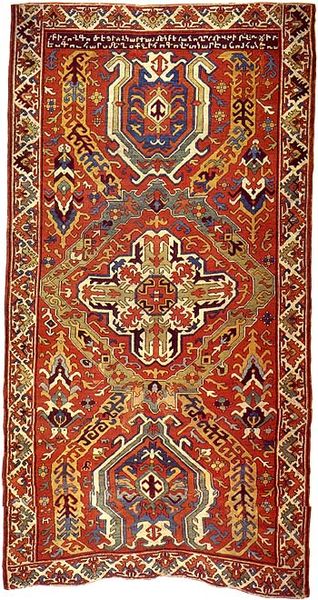
The highest mountains in the world are in Asia. In these cold mountains or on the windy deserts below them, very early tribes made "felted" rugs of thickly matted hair.
In Sweden at the same time, the word rugg simply meant "entangled hair.".
Later, the Romans had rugs of felt with embroidered designs and the Chinese made them more than one thousand years ago.
Even today, small rugs of felt with colored flower embroidery are still made in India.
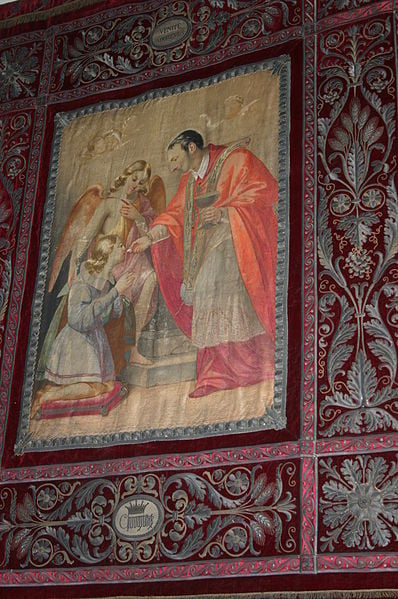
Tapestry Rugs
Tapestry rugs or khilims, began in ancient Babylon and Egypt. As much as 2,500 years ago "purple carpets of finest wool, with the pattern (alike) on both sides" were described at a royal banquet in Egypt. The same kind is still made by the Arabs in northern Africa, and among all the tribes of Asia.
Ancient Egypt also had woven floor and seat covers, used by priests in the palaces of the Pharaohs, which were the ancestors of the pil carpets. Pictures of ancient Egyptian weavers are still to be seen at the tombs of Beni-Hassan, carved in the rock nearly five thousand years ago.
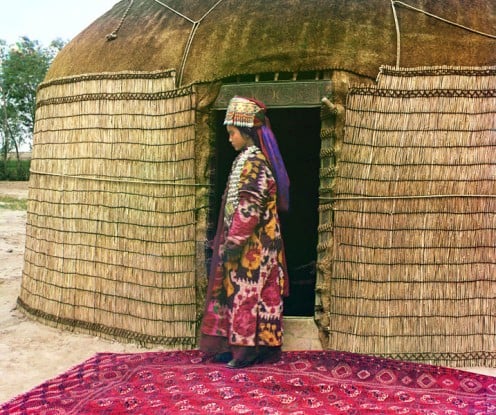
The Real Home Of The Pile Carpet
The real home of the pile carpet was Turkestan, in the heart of Asia. Roving, or nomad tribes still live in this large lonely land north of Iran, Pakistan, and India.
The people are shepherds, not farmers, and keep moving to find the best pastures for their sheep and goats. Summer is spent in the mountains and winter in the desert valleys. These nomads do not settle down long enough to build houses. They cannot carry much furniture about with them. The rugs are almost their only furniture.
Their dwelling, called a yurt, is a round wigwam or tent, with a domed top, made on a light wooden framework that can be taken apart in an hour's time and moved by camel back. It is covered with reed matting in the hot summer time or with thick felt in the icy winter. A carpet is hung as a door into the yurt, with other carpets used for warmth around the outside walls, or dividing the tent into small rooms.
While the men tend the flocks, women weave all the carpets. The warm coats of their sheep make wool of the finest kind. They also use the hair of the goats and camels. For their clear, rich colors they use mainly dyes made from plants: Blue from the indigo plant, red from the madder, yellow from the saffron.
Two little bus, the cochineal and the kermes, yield a bright scarlet dye. Black famel fur is used and also black sheep's wool, but that is not often found.
Bold, angular designs with plenty of red in various tones have been used for rugs since the earliest days. Pieces of carpet two thousand years old have been unearthed in remote Chinese areas.
The design was often a badge of the tribe, just as the different Scottish plaids were marks of different clans. Large and bright patterns were wanted so the tens or caravans could be recognized at a distance.
Through many centuries these nomads spread their art over the whole continent, from China in the east to Turkey in the west. Other races in time learned to make finer carpets, no longer in tribal or family patterns, but in very elegant designs.
